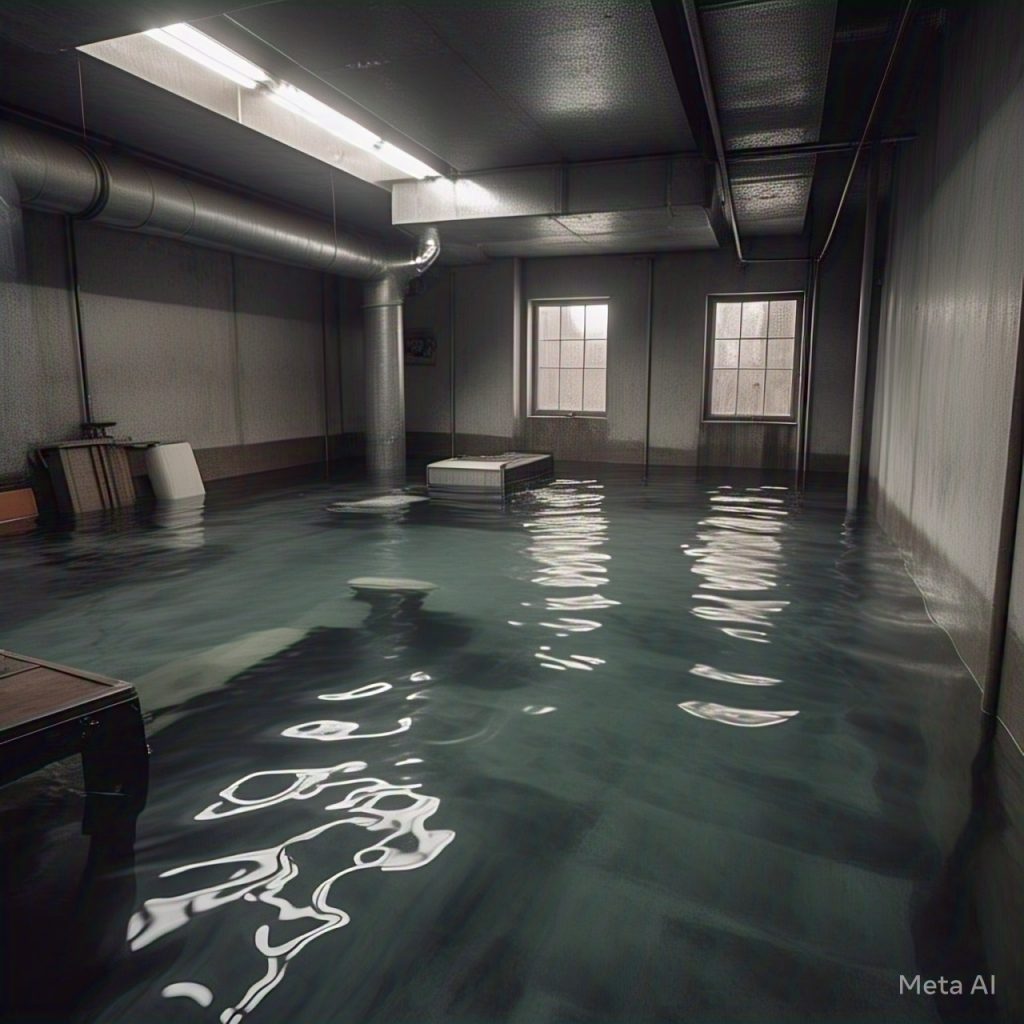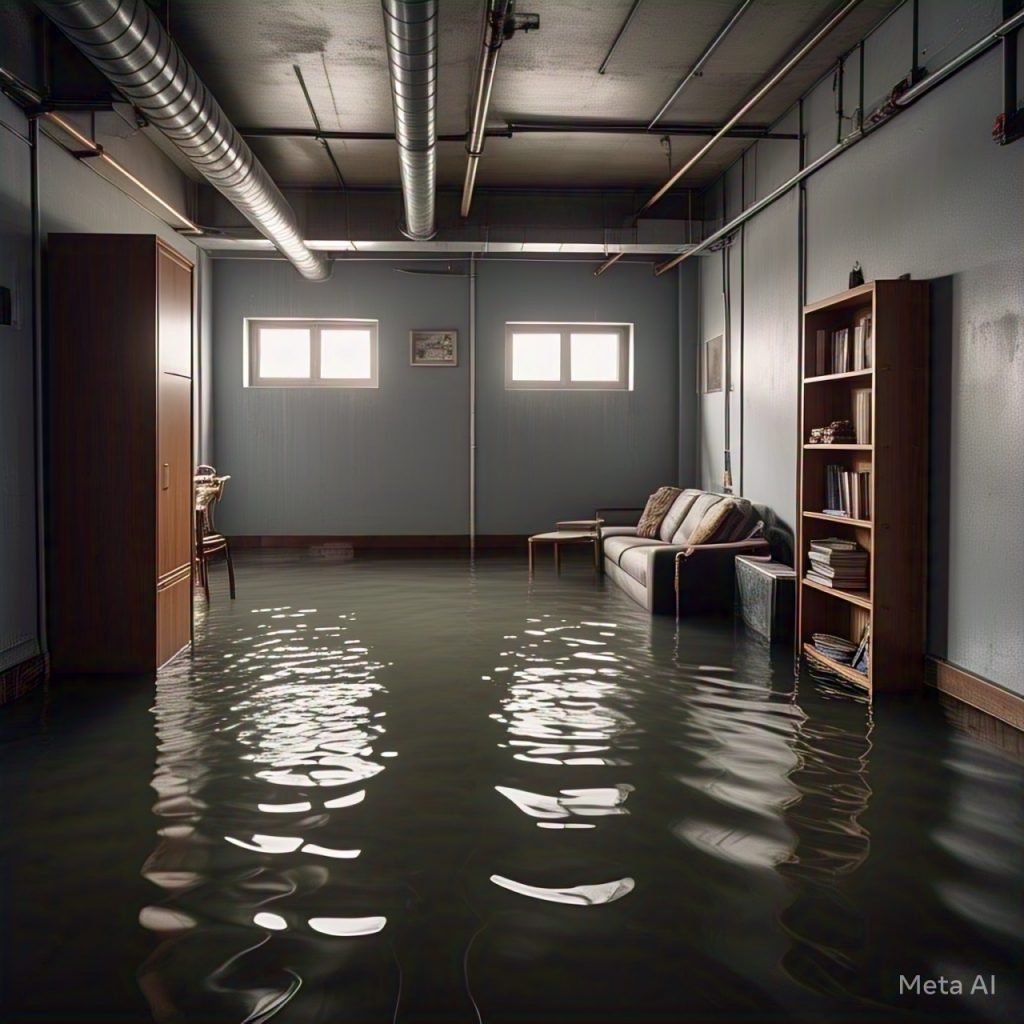Table of Contents
Rainfall basement flooding restoration in fort wayne: Heavy rainfall can be a blessing for gardens, but a nightmare for homeowners with basements. Rainfall flooding is one of the most common causes of basement flooding and water damage, especially during spring and fall.
Water damage doesn’t just harm your property—it can lead to mold, structural problems, and costly repairs. For immediate assistance with flooded basement restoration service in fort wayne Indianapolis, contact PuroClean disaster restoration of west fort wayne, Call (+1) 260-263-9788.

Whether you’re preparing for storm season or have already experienced the chaos of a flooded basement, this guide will walk you through how to protect your basement from rainfall flooding and prevent water damage before it starts.
Why Do Basements Flood During Rainfall?
Basements are below ground level, making them naturally vulnerable to water seepage. Here are the most common reasons your basement floods during heavy rain:
- Poor drainage systems
- Cracks in foundation walls or floors
- Clogged or broken gutters and downspouts
- Backed-up sewer lines
- Improper landscaping slope (grading)
Even minor rainfall can cause problems if these systems are not functioning properly.

10 Proven Ways to Protect Your Basement from Rainfall Flooding
1. Install a Sump Pump with Battery Backup
A sump pump collects excess water around your foundation and pumps it away from your home. This is your first line of defense against basement flooding. Make sure to:
- Test it regularly.
- Clean out debris from the sump pit.
- Install a battery backup in case the power goes out during a storm.
2. Grade Your Landscape Away from Your Foundation
If your yard slopes toward your house, rainwater will naturally flow toward your foundation. Regrade your yard so it slopes away from your home to keep water at bay.
3. Clean and Maintain Gutters and Downspouts
Clogged gutters cause water to spill over and pool around your foundation. Do this:
- Clean gutters twice a year.
- Use gutter guards to reduce debris.
- Extend downspouts at least 6 feet away from the house.
4. Seal Cracks in Basement Walls and Floors
Inspect your basement for any visible cracks. Use hydraulic cement or epoxy-based sealants to seal up small cracks. For larger cracks or recurring water seepage, call a professional.
5. Waterproof Your Basement Walls
Apply basement waterproofing paint or membrane to walls and floors. This provides an extra barrier that keeps water out and prevents mold growth.
6. Install a French Drain or Exterior Drain Tile System
A French drain redirects water away from your basement. While it involves some digging, it’s an effective long-term solution for homes in flood-prone areas.
7. Use a Dehumidifier and Monitor Indoor Humidity
Rainy seasons can raise humidity, leading to condensation and water damage inside your basement. Keep humidity levels between 30% and 50% with a quality dehumidifier.
8. Inspect Plumbing and Sewer Lines
Old or clogged sewer lines can cause backups during rainfall. Have a licensed plumber check your:
- Main sewer line
- Backwater valve
- Floor drains
9. Keep Valuable Items Off the Floor
Store items on shelves or pallets to prevent damage if flooding does occur. Use plastic bins with tight lids rather than cardboard boxes.
10. Consider Basement Flood Insurance
Most homeowners’ policies don’t cover flood damage. If you live in a high-risk area, get a flood insurance policy that covers basement contents and structure.

DIY vs. Professional Basement Waterproofing: What’s Best?
DIY waterproofing can save money, but it might not be enough for severe or recurring flooding. Hire a professional if you notice:
- Water stains reappearing
- Musty odors
- Pooling water after storms
- Large foundation cracks
Professionals offer comprehensive solutions, including interior and exterior waterproofing systems, mold remediation, and structural repairs.
When to Call a Water Damage Restoration Expert
If your basement has already flooded, acting fast is critical to avoid:
- Mold growth (within 24-48 hours)
- Wall and flooring damage
- Electrical hazards
- Structural weakening
Contact a certified water damage restoration company in Indianapolis with 5 star google reviews like PuroClean Disaster Restoration to handle cleanup, drying, and restoration.
Prevention Checklist: Keep This Handy Before the Next Storm
Test your sump pump
Clean gutters and downspouts
Seal foundation cracks
Regrade the landscape
Use waterproof paint or membranes
Install a French drain or drainage system
Check plumbing and sewer lines
Use a dehumidifier
Store items above ground
Review your flood insurance policy
FAQs (Frequently Asked Questions) – 500 Words
1. What’s the best way to stop basement flooding during heavy rain?
The best defense is a sump pump with a battery backup combined with proper exterior drainage, like extended downspouts and sloped landscaping. Regular maintenance of gutters and sealing foundation cracks is also essential.
2. Why does my basement always flood after it rains?
Chronic flooding is often due to poor drainage, cracked foundations, or blocked gutters. It can also be caused by hydrostatic pressure—when water builds up around your foundation and forces its way in.
3. How much does it cost to waterproof a basement?
The cost varies widely:
- DIY sealing kits: $100 – $500
- Interior waterproofing: $1,000 – $5,000
- Exterior systems: $5,000 – $15,000+
A professional inspection can help determine the best route based on your home’s condition.
4. Will insurance cover basement flooding?
Most standard homeowners’ insurance policies do not cover flood damage caused by rainfall. You may need separate flood insurance through the National Flood Insurance Program (NFIP) or private providers.
5. Is it safe to stay in a home with a flooded basement?
No. Flooded basements pose electrical and structural hazards. If water has reached outlets, appliances, or the circuit panel, do not enter. Call an electrician and a water damage restoration expert immediately.
6. Can mold grow after a single basement flood?
Yes. Mold can begin to grow within 24–48 hours of water exposure. That’s why drying, dehumidifying, and disinfecting are crucial after any flooding event.
7. How do I test if my sump pump works?
Pour a bucket of water into the sump pit. The float should rise, triggering the pump to turn on and drain the water. If it doesn’t, check power connections or consult a technician.
8. What is a French drain and how does it help?
A French drain is a gravel-filled trench with a perforated pipe that redirects water away from your basement. It prevents pooling and relieves pressure from the foundation walls.
9. What’s the difference between water seepage and flooding?
Seepage is gradual water entry through walls or floor cracks, while flooding involves significant water buildup, often from heavy rains, plumbing failures, or sewer backups.
10. Can I waterproof my basement from the inside?
Yes, interior waterproofing includes using sealants, vapor barriers, sump pumps, and interior drain tiles. However, for best results, it’s often paired with exterior solutions.
Final Thoughts: Be Proactive, Not Reactive
Rainfall flooding is a growing problem due to changing weather patterns. But with the right preparation and maintenance, you can significantly reduce the risk of basement flooding and water damage. Invest in long-term solutions like drainage systems and sump pumps, and don’t ignore warning signs.
If you’ve already experienced flooding, don’t wait—reach out to a professional water damage restoration expert to help recover your basement and prevent future issues.
Need help with basement waterproofing or water damage repair? Contact a trusted local service to inspect your home and provide tailored solutions.
 PuroClean Disaster Restoration of West Fort Wayne
PuroClean Disaster Restoration of West Fort Wayne